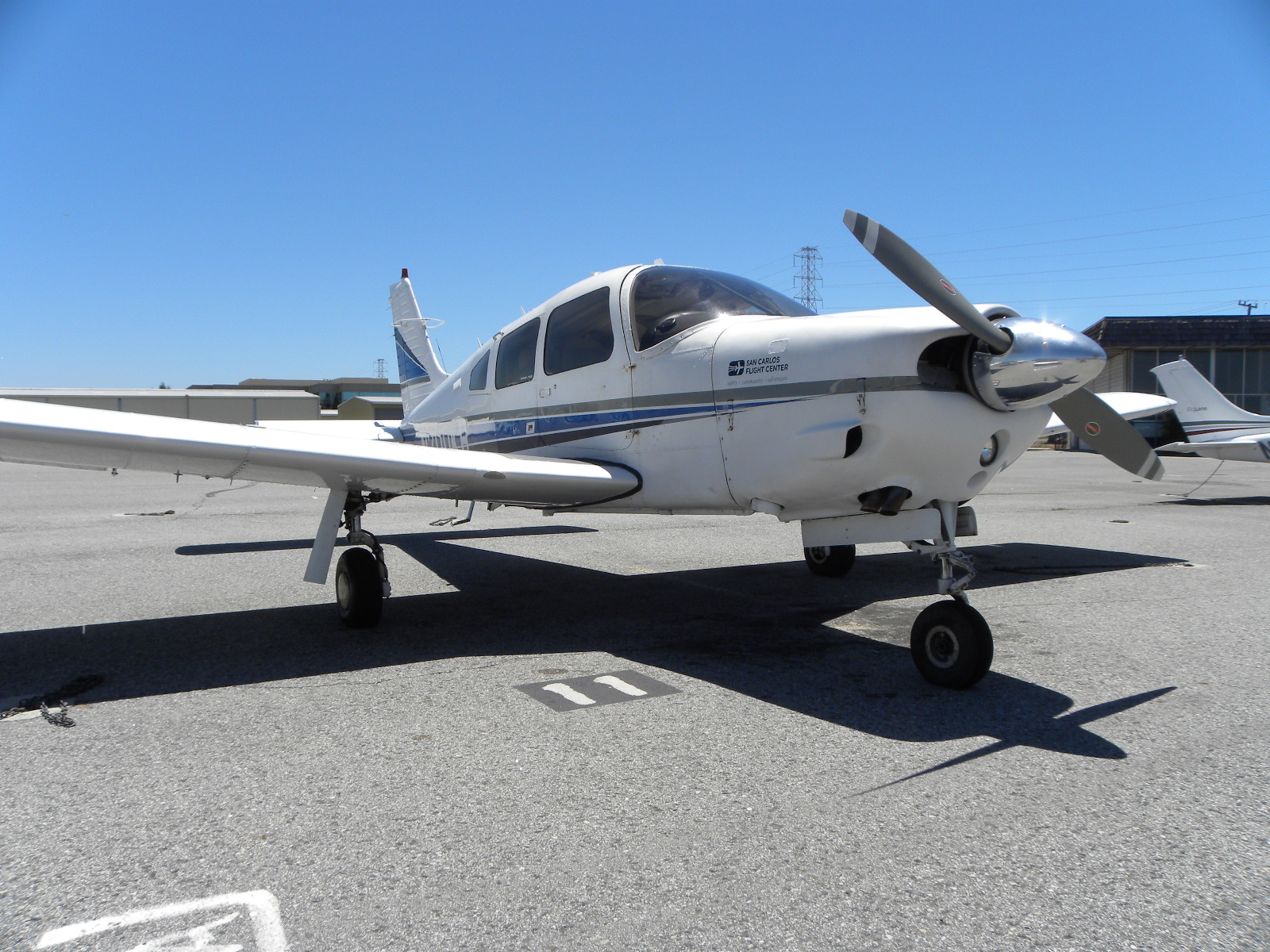Table Of Content

We counted 11 reports of turbocharger problems in our latest SDR search. These included cracked and leaking housings, impeller damage and leaking seals. The AD permits cracks of certain lengths to remain in certain sections of the housing, but buyers naturally would be wise not to accept them.
Marketplace
From a maintenance standpoint, Arrow owners should be aware of the history of wing spar cracks on the PA-28 family of aircraft. Know what to inspect, conduct regular inspections as recommended, and comply with applicable airworthiness directives. As the mid-1960s approached, Piper started eying up the light four-place retractable gear market that Cessna was not competing in at the time and that Mooney was dominating. Starting with the successful design of the Cherokee as a template, the Piper design team got to work and in 1967 the Piper Arrow was born. Maintenance on a Piper Arrow is similar to that of the rest of the PA28 family. Since these aircraft are so popular, it should not be hard to find mechanics and engineers who are familiar with them.
Insurance Options
The gear plops out seconds before splash down-sending the Arrow head over heels. During a representative five-year survey of the FAAs accident/incident reports, The Aviation Consumer counted 95 Arrow gear-ups involving some type of pilot error. Many occurred during an instructional flight with a CFI aboard. Often, the automatic extension system was overridden while pilots were practicing slow flight or performing stalls.
Limiting and Recommended Airspeeds
Why Bother With Retractable Gear? - Plane & Pilot
Why Bother With Retractable Gear?.
Posted: Thu, 05 Mar 2020 08:00:00 GMT [source]
One SDR submitter suggested that a 0.025 stainless steel plate would help prevent incineration of the galvanized steel firewall, which is very close to turbo assembly and exhaust stack. Another pilot told us his mechanic installed several stainless steel heat shields under the cowl to protect these elements. And theres no escaping big bills required when upper-end engine parts like cylinders or valves fail. A number of owners cited repairs to these, although a couple of others moaned more about the money they laid out more than once to replace failed alternators. So the pilot is told to ease in only about 30 inches of MP as he starts out, then advance the throttle to the full whopping 41 inches as he goes bouncing along on takeoff. Since the MP needle tends to surge in a slippery fashion with throttle movement, the pilot tends to spend too much time nailing down throttle position.
Piper Arrow Marketplace
Six Seat Stalwart: Used PA-32 Review - FLYING
Six Seat Stalwart: Used PA-32 Review.
Posted: Tue, 09 Mar 2010 08:00:00 GMT [source]
The automatic gear system is a pain, and I keep it on override and have disconnected the orange warning light. The defroster is a joke-plenty of air, but it isnt even warm, much less hot. The old Warrior put out lots of hot air, and still didnt melt the windshield. I also cant understand why Piper put the heat control over the defroster control-poor human factors engineering. Also, the copilot side heat is much hotter than the pilot side, and this is also true in the back seat. Total maintenance (engine, airframe, avionics, 50-hr oil changes, 100-hr inspections and annuals) on the IV is now at a rate of $17.66 per tach hour (averaging 190 tach hours/year).
Airliners Stop 300 Feet Apart At DCA
This last version had a semi-tapered wing and a longer stabilator, which gave better low-speed handling. Finally, they built the New Arrow, which is the current version and is still being produced. Its impossible to check and/or add oil without banging knuckles and spilling oil all over. The manifold pressure gauge is too hard to read, especially in the 29-33″ range used for cruise. The floor ventilation system is very effective, but not the overhead vents.
This is powered by a 200-horsepower Lycoming engine and also has Garmin G500 avionics. No sweat to get 1,000 fpm at 100 knots, except when fully loaded in high temperatures. In January, coming back from Florida at 17,000 feet, we asked for 19,000. The controller asked if we could get there in less than four minutes. The mechanic re-sealed all of the windows, but that didnt help the baggage area leak.

Propeller aircraft
Through longevity and numbers, it may have replaced the Bonanza as the ubiquitous retractable single. Cessna joined the fray in 1979 with the turbocharged retractable 182 and, two years later, introduced a turbo version of the fixed-gear Skylane. The Cessna would be the only of the low-end turbos to compete with the Arrow in terms of sales volume. All told, Cessna cranked out about 1,400 turbo Skylanes, compared to approximately 1,700 Turbo Arrows; Mooney produced 890 of the 231s, and Rockwell turned out just more than 300 of the 112TCs and 112TCAs. Piper outfitted the Cherokee 180 with folding legs, and in 1967 unveiled the first Arrow. The Cherokee did well, and was soon joined by the 180 and 235, giving Piper a strong lineup of fixed-gear singles suitable for a variety of missions.
Taper-wing Arrow owners report as much as 6.5 hours’ endurance, while Arrow II owners sometimes wish for larger tanks. This new wing found its way onto the Piper Arrow in 1977, creating the Arrow III. This is because a heavier aircraft should fly faster to generate the required lift at the most efficient lift coefficient. ECON speed will also be higher at higher altitudes because the density of the air is lower. In part, Piper was responding to the complaints of irate owners who believed the system worked often enough to be desirable. But the Arrow IIIs 72-gallon fuel tanks eliminated that problem.
Cessna had a runaway success on its hands with the 172, and Pipers competition – the Tri-Pacer – was downright dowdy by comparison. In the retractable market, Piper did have the sleek and handsome Comanche to sell, however. Homebuilt aircraft are becoming more and more popular these days with several different experimental aircraft kits on the market. The Piper Arrow has a range of 300 to 700 nautical miles on most models.
After a couple of years, in 1979, the styling engineers decreed the Turbo Arrow should have a T-tail. Arrow was considered one of the many designs which survived the bankruptcy of the company. When the latest model came in year 1990s, Piper Arrow held its position amongst the company’s lineup in the type of Arrow III.
While many comparable airplanes at the time come with manual gear extensions, Piper Arrow landing gear was operated electromechanically through a plain or simple cockpit lever. What made this aircraft apart from the rest is the integrated automatic gear extension system. The fact that this aircraft was designed as a transition airplane for a new pilot operating a complicated airplane, the company figured this might occur too often in the Arrow. Engineers planned and made a system that would instantly lower the gear once airspeed reduced by 91 knots and various pressure reduced into power regimes you may find on final approach.
Properly modified and carefully maintained, the Turbo can be a highly desirable transportation tool. What further improvement the aftermarket holds for the airplane, time will tell. Prepare a list of airplanes whose makers got everything right (or very nearly so) the first time, and you'll end up with a rather short list.
In 1979, Piper made a controversial design decision, opting to equip many of its airplanes with trendy, fashionable T-tails. The Arrow was no exception, and the resulting machine was dubbed Arrow IV. The T-tail, depending on airspeed, is either very effective or far less effective than a conventional tail (which isnt as prone to abrupt transitions between different flying regimes). This is due to the fact that the stabilator sits up out of the propwash, and so is less effective at low airspeeds. Many pilots complain that the Arrow IV has squirelly low-speed performance, with a tendency to over-rotate on takeoff. Others, who dont try to fly the Arrow IV like the earlier models, look more favorably upon the T-tail.
The C1C engine was more costly in other ways, too – it had a 1200-hour TBO, compared to 2000 for the 180. That has since been remedied through the retrofit of new exhaust valves, and its unlikely that any of the 1200-hour mills are left. It increases the critical altitude by 5,500 feet as well as boosting cruise climb and speed slightly and lowering CHT and oil temperatures significantly. The Piper Arrow’s automatic landing gear extension system was intended as a safety feature; Piper touted the Arrow as the perfect airplane for pilots transitioning to retractables. Many pilots and insurance underwriters embraced the “foolproof” gear system with some insurers even assigning lower rates. Another way the Turbo Arrow follows in the footsteps of its Cherokee forebears is in price — getting into one will not require an armed withdrawal at your local bank.
It currently has 3400 hours on the airframe and 1400 hours since its first engine overhaul. Fast-forward to 2016 and I have over 1200 hours on the engine and all has been good. I use CamGuard additive and Phillips oil blend to reduce potential corrosion. I had one sticky valve that had to be lapped, but that has been it.

No comments:
Post a Comment